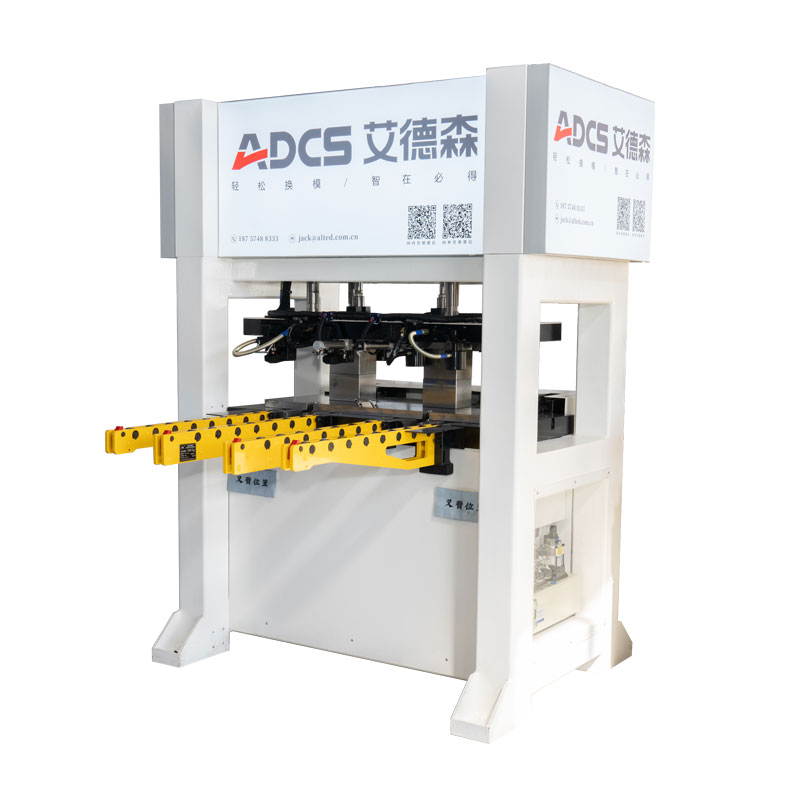How Does a Quick Die Change (QDC) System Improve Production Efficiency?
2025-07-21
In today’s fast-paced manufacturing world, time is money. Whether you're producing metal parts in a stamping press or plastic components in an injection molding machine, downtime during die changeovers can dramatically reduce productivity. This is where the Quick Die Change (QDC) system comes in.
A QDC system is designed to minimize the time, labor, and risk involved in changing dies on manufacturing machines. By automating and streamlining the die change process, QDC systems have become a cornerstone of lean manufacturing. But how exactly does a QDC system improve production efficiency?
Let’s break it down.
1. Significantly Reduces Changeover Time
Traditionally, die changes could take several hours, especially when done manually. A QDC system brings that down to minutes. This is achieved through:
Automated clamping/unclamping systems
Quick-connect systems for utilities
Die lifters and rails for smooth handling
Pre-positioned dies ready for installation
With these components working together, machine downtime is reduced, which allows for more production time.
Example:
If a manual die change takes 2 hours and a QDC system reduces it to 10 minutes, that’s 110 minutes gained per change. Over a week or month, that adds up to substantial extra production time.
2. Enables Smaller Batch Production (Flexible Manufacturing)
In many industries, the demand for customization and small batch runs is increasing. Traditional setups struggle with this due to the long changeover times. A QDC system enables faster transitions between different dies, making it practical and cost-effective to run smaller batches.
Benefits:
Less inventory needed
Faster response to customer demands
Greater product variety without extra cost
3. Improves Labor Efficiency
Manual die changes often require multiple workers, specialized tools, and long procedures. QDC systems reduce the manpower needed and simplify the process with intuitive automation and mechanical aids.
Labor-related benefits:
Reduces the number of operators per changeover
Minimizes risk of injury from lifting heavy dies
Less reliance on highly skilled technicians for basic tasks
This allows manufacturers to better allocate human resources where they are most needed.

4. Reduces Human Error and Rework
Manual processes are prone to inconsistencies. Misaligned dies, loose fittings, or incorrect settings can lead to defective products and costly rework.
QDC systems reduce this risk by:
Automating die alignment and clamping
Providing digital feedback on die placement
Using sensors and safety checks to confirm correct installation
The result is higher product quality and less scrap material.
5. Supports Lean Manufacturing and SMED Principles
QDC is closely aligned with SMED (Single-Minute Exchange of Die), a lean manufacturing principle aimed at reducing setup time to less than 10 minutes. By reducing waste and improving changeover speed, QDC supports a leaner, more responsive manufacturing operation.
Lean-related outcomes:
Lower work-in-progress (WIP)
Reduced inventory
Shorter lead times
Faster delivery to customers
6. Maximizes Equipment Utilization
When machines are idle for long periods during changeovers, their productivity suffers. QDC systems keep presses and molding machines running more consistently by minimizing downtime.
Key metrics impacted:
OEE (Overall Equipment Effectiveness): Improved due to reduced downtime and increased availability
Machine throughput: More parts produced per shift
ROI (Return on Investment): Faster payback on equipment due to increased usage
7. Improves Workplace Safety
Die changes involve heavy lifting, tight spaces, and complex setups—all of which carry risks. QDC systems improve safety through:
Hydraulic/pneumatic systems that minimize manual handling
Safety interlocks that prevent machine operation during die changes
Ergonomic designs that reduce strain on operators
Fewer accidents mean less downtime and lower liability for employers.
Implementing a Quick Die Change system isn't just about saving time—it’s about transforming your entire production approach. By enabling faster changeovers, reducing errors, improving safety, and supporting lean practices, QDC systems can deliver a major boost in overall production efficiency.
For manufacturers facing growing demand, smaller order sizes, or high labor costs, investing in a QDC system is a strategic move toward smarter, more agile operations.
Ready to make your production more efficient?
Consider evaluating your current die change process to identify areas where a QDC system could create immediate value. The investment could pay for itself in just a few months through reduced downtime and increased throughput.


